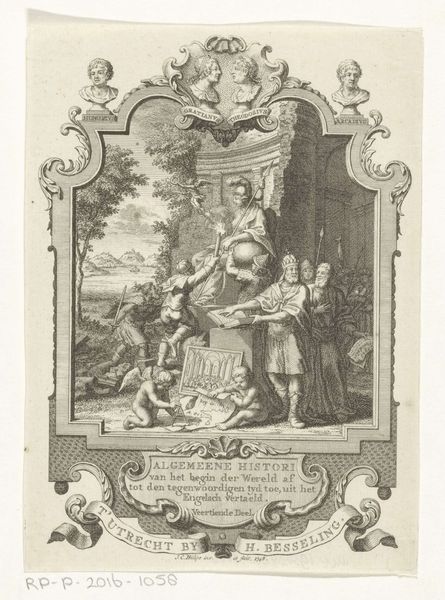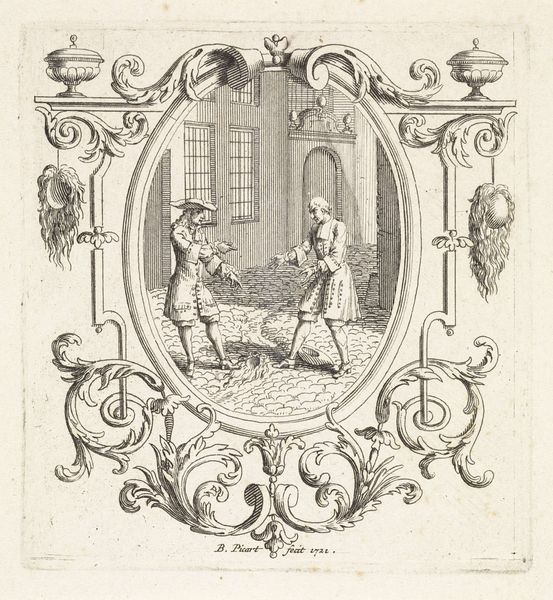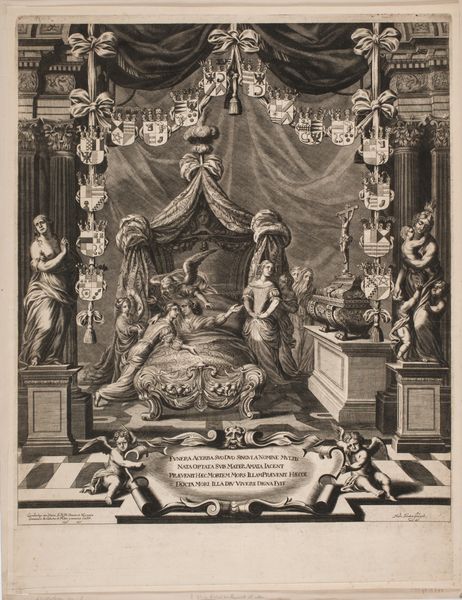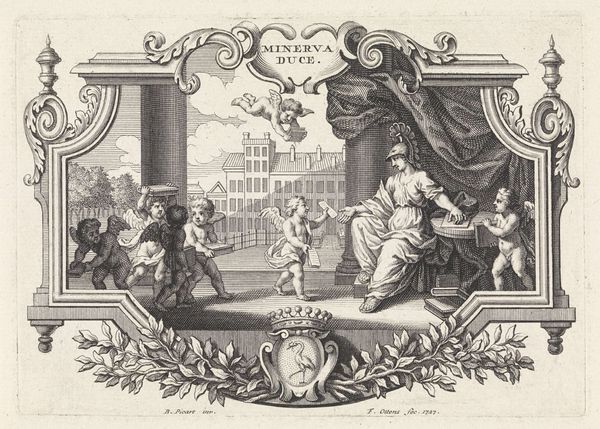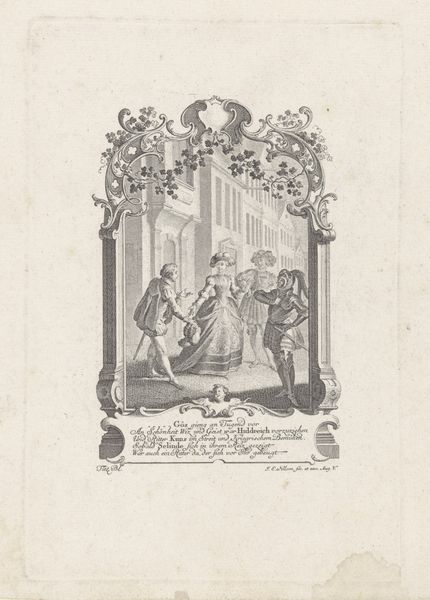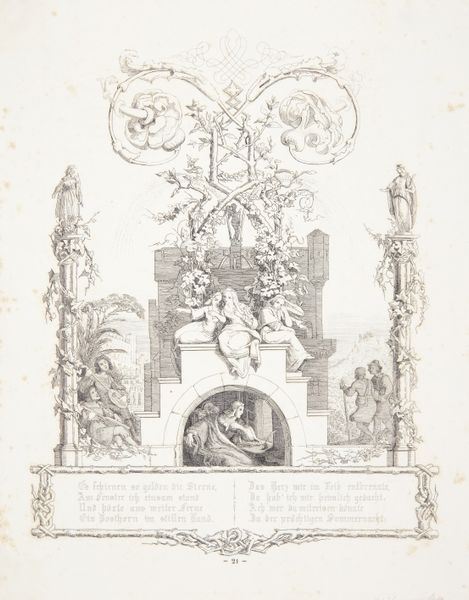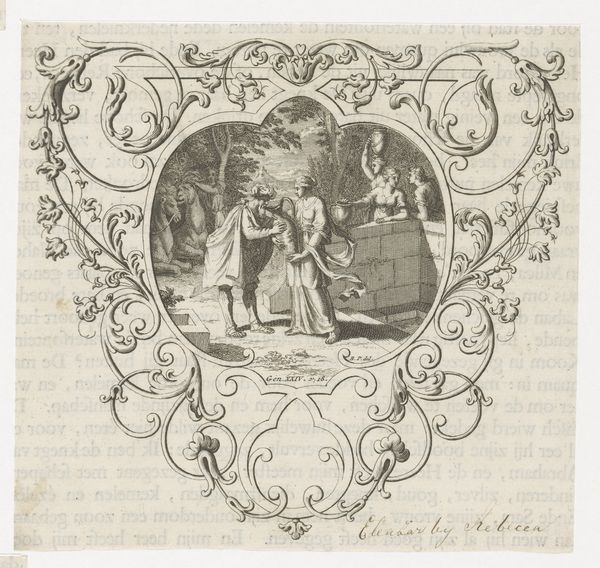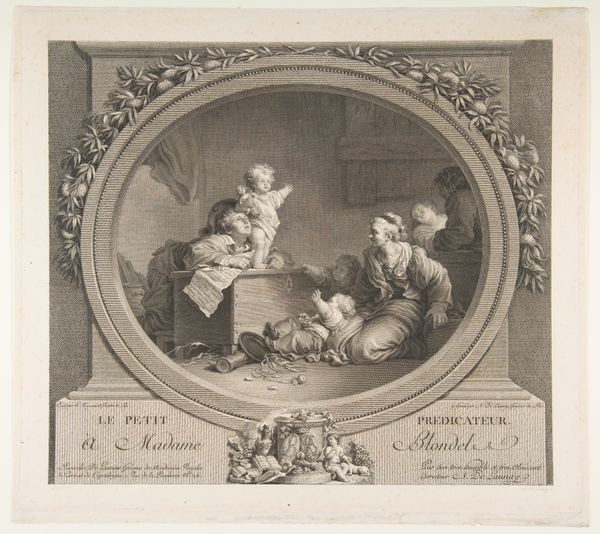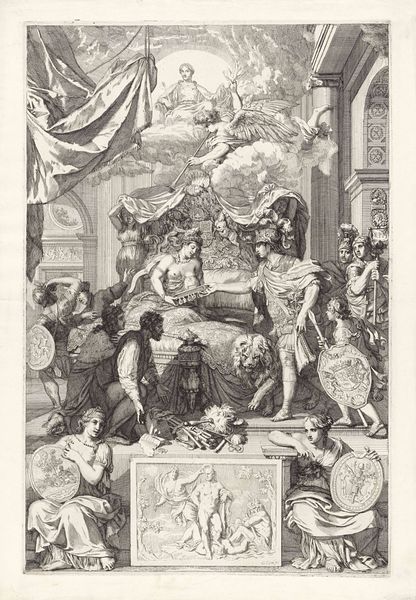
drawing, print
#
drawing
#
allegory
#
baroque
# print
#
figuration
#
line
#
history-painting
Dimensions: image: 7 11/16 x 8 3/4 in. (19.6 x 22.3 cm), trimmed to image
Copyright: Public Domain
Curator: Here we have Claude Gillot’s “Frontispice to Theatre Italien,” created sometime between 1685 and 1722. It’s currently held at the Metropolitan Museum of Art. Editor: This image feels incredibly layered, almost like a stage set within a stage set. The figures are lively, but it's all contained within a very structured frame. How do you interpret this complex arrangement? Curator: Let's first consider the frame itself. Notice the ornate, almost architectural elements. They create a boundary, a clear distinction between the 'real' world and the theatrical space represented within the image. Editor: I see that. So, the frame isn’t just decorative, it’s part of the message? Curator: Precisely. The interior scene, with its commedia dell'arte figures and allegorical representations, is meticulously organized using the picture plane. Note the linear perspective that is shallow. It does more than depict the scene; it is the scene. Look closely at the use of line and how that line describes form. Editor: That emphasis on line gives it a crispness, even in the more fantastical elements like the figures in the sky. Curator: The visual language is clear and distinct. Each element contributes to a coherent, structured whole. Is there any area where you think this breaks down? Any moment when the structure doesn't quite hold? Editor: I think perhaps in how ephemeral the sketched actors are on stage, they have less line quality and feel 'looser' to the eye, even unfinished in comparison. They are however the core narrative! Curator: An excellent observation. It is a planned structure reflecting its time period and purpose. We are structuring the viewer. Editor: That makes me look at this in an entirely new way! Curator: Indeed, understanding the internal structure reveals much about how Gillot sought to engage the viewer.
Comments
No comments
Be the first to comment and join the conversation on the ultimate creative platform.
